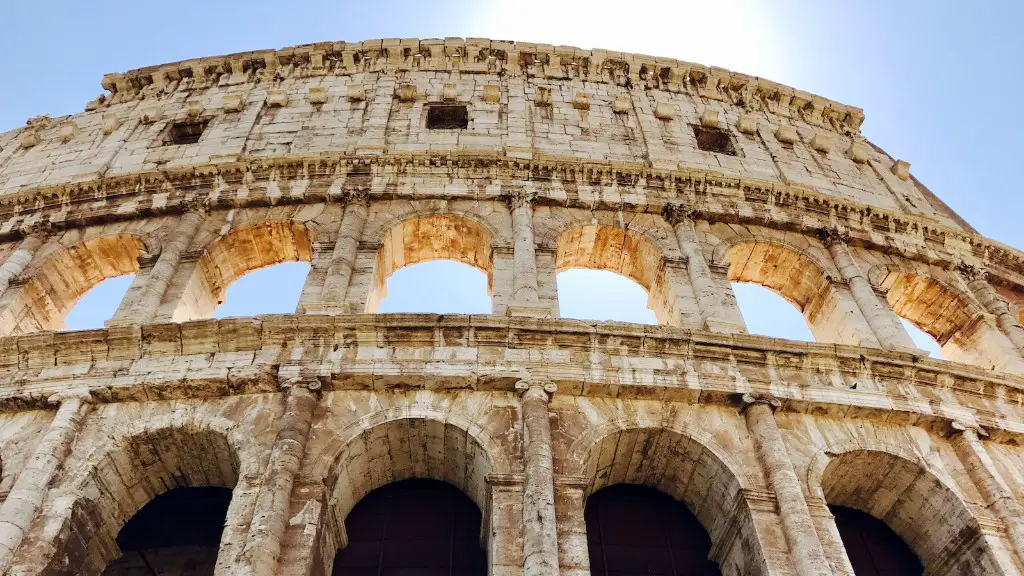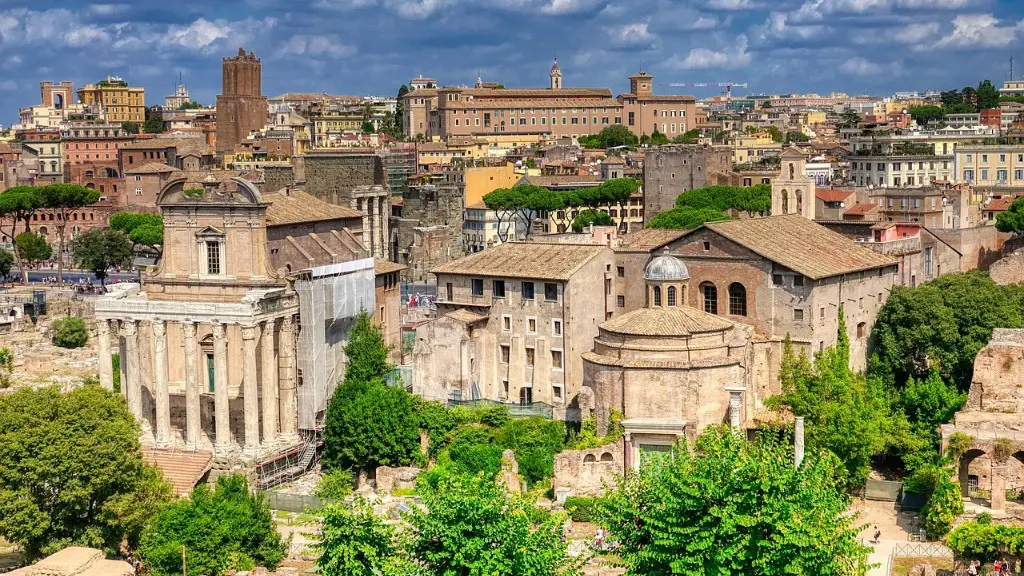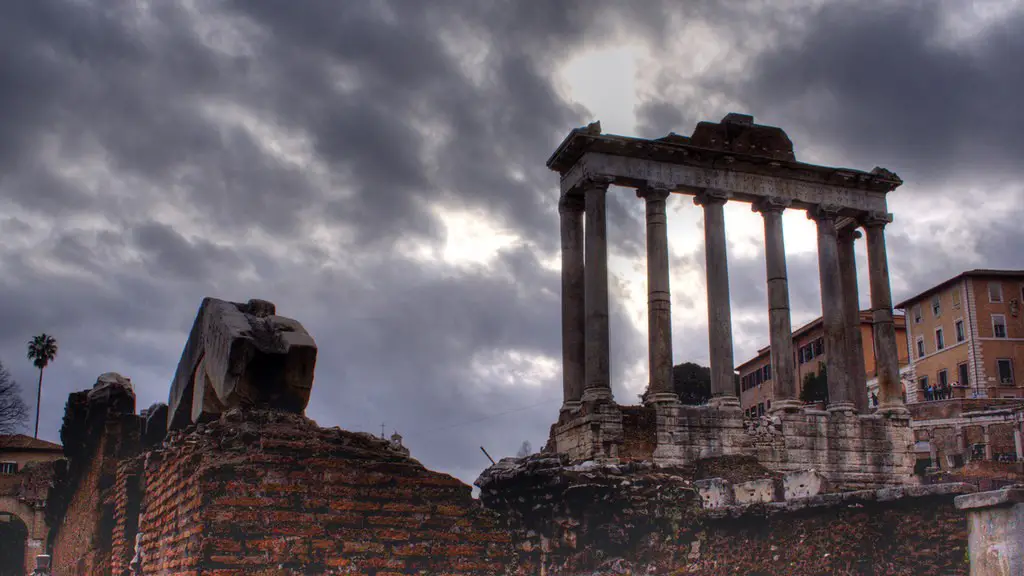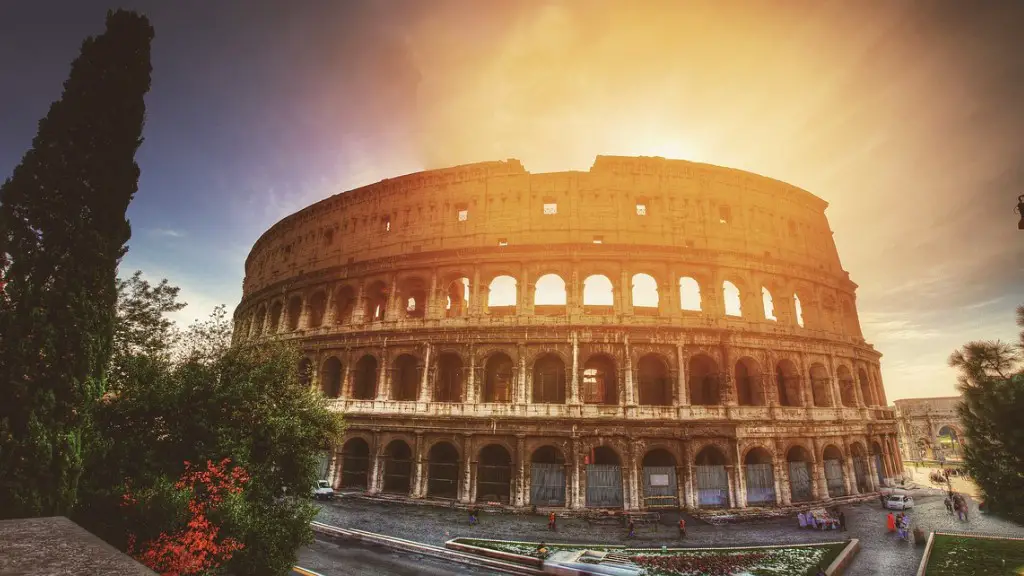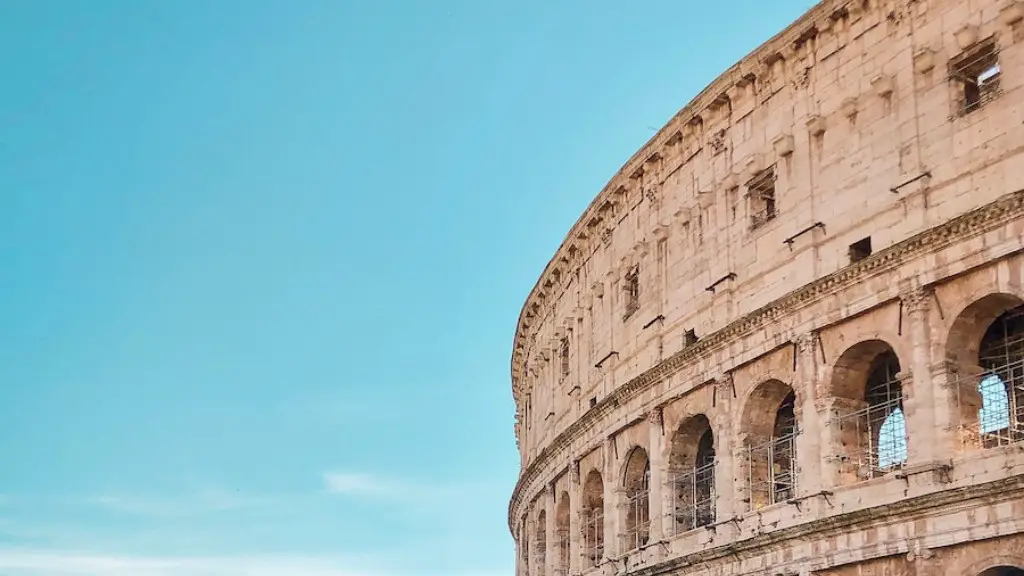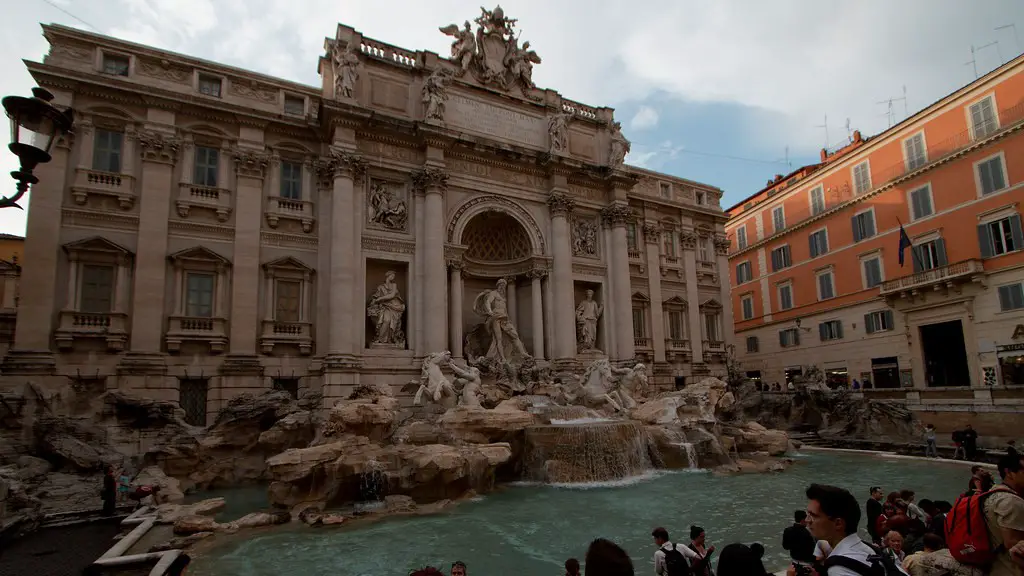In some ways, life in ancient Rome was very similar to life today. People in both time periods had to work to earn a living, and they engaged in social activities with friends and family. However, there were also many differences. For instance, ancient Romans did not have the same technology that we do today, and they believed in gods and goddesses instead of science.
There are many ways in which life in ancient Rome was similar to life today. For example, both societies had a complex social hierarchy, with many different classes of people. Both societies also valued entertainment and art, and both had a thriving economy. However, there were also some important differences. For instance, life in ancient Rome was much more violent, and women had far fewer rights than they do today.
What is the connection between Rome and our world today?
The Roman Empire was one of the most influential empires in history. From art and architecture to technology and literature, the Romans have left their mark on our world. Even though it has been thousands of years since the Roman Empire flourished, we can still see evidence of it in our everyday lives.
In a Roman city, your economic status dictated your daily life. The city was a mix of wealth and poverty, and the two often existed side by side. If you were wealthy, you had slaves to do things like heat your water at the baths, serve you your evening meal, or educate your children.
What things from ancient Rome do we still use today
1. Cement: The use of cement was first developed by the ancient Romans, and it has since been used in a wide variety of construction projects around the world.
2. Sanitation: The ancient Romans were also responsible for developing early sanitation systems, which were vital for the health and wellbeing of urban populations.
3. Roads: The Roman road network was one of the most impressive engineering feats of the ancient world, and it played a key role in the expansion of the Roman Empire.
4. Social care and welfare: The Romans were pioneers in the development of social welfare systems, which provided assistance to the poor and disabled.
5. Julian calendar: The Julian calendar, which is still used in many parts of the world today, was first introduced by the Romans.
6. Elements of surgery: The Romans made significant contributions to the field of surgery, and many of their techniques are still used in modern medicine.
7. Elements of the modern legal system: The Roman legal system was the basis for many of the legal systems that exist today, and it has shaped the development of Western law.
8. Roman art and architecture: The Roman Empire was responsible for some of the most impressive art and architecture
The Romans were the main force in spreading many aspects of what is known Today as the “Western Culture” This includes: Western values, government and law concepts (see further below) Civil engineering and infrastructure.
How are Rome and the US similar?
Rome and the United States have both used the three branches of government, which are the Executive, Legislative, and Judicial branches. All the citizens in Rome had to abide by rights and laws made by the branches of government just like the citizens of the United States. The difference is that in Rome, the Legislative branch was made up of the Senate, which was a group of wealthy landowners. The Senate appointed the members of the other two branches, and they had the power to veto any laws that were passed by the other two branches. In the United States, the Legislative branch is made up of Congress, which is made up of representatives from all the states. The members of the other two branches are appointed by the President, and Congress has the power to override any laws that are passed by the other two branches.
It’s fascinating to think about how many ways Ancient Rome has impacted American society, from the laws we follow to the literature we read. It’s hard to imagine what our country would be like without these influences and it’s a testament to the lasting legacy of the Roman Empire.
What is the way of life in Rome?
The Roman Forum was the center of life in Ancient Rome. It was a large open space that was used for public gatherings, business transactions, and entertainment. Wealthy Romans lived in big houses built around courtyards while most Romans were poor and lived in apartment buildings. The Forum was a popular place to shop, conduct business, play games, and visit with friends.
The Romans were a major contributor to world civilization and their legacy can be seen all around us. Here are 13 things that the Romans did for us:
1. Fast Food: It might seem a modern marvel, but the Romans were the first to introduce street stalls and ‘food on the move’ as we might think of it today.
2. Advertising and Trademarks: The Roman Empire was one of the first to utilize advertising and trademarks as a way to promote their businesses.
3. Plumbing and Sanitation: The Romans were responsible for major innovations in plumbing and sanitation, including the development of public baths and toilets.
4. Towns: The Romans were the first to develop the concept of the town, which became the basis for modern cities.
5. Architecture: The Romans were responsible for major innovations in architecture, including the development of the arch and concrete.
6. Roads: The Romans built an extensive network of roads that allowed for the efficient movement of people and goods throughout the empire.
7. Our Calendar: The Roman calendar was the basis for the modern calendar that we use today.
8. The English Language: The English language is derived from Latin, which was the language of
How did ancient Rome impact the world today
Roman roads, buildings, arches, and aqueducts are still standing today because of the incredible engineering and design that went into them. The Roman Empire was one of the most advanced civilizations of its time, and their architecture reflects that. Even after 2000 years, these structures are still some of the most impressive in the world.
Rome has had a significant impact on our modern world in many ways. Here are just a few examples:
– Roads: The old proverb “all roads lead to Rome” stems from the fact that originally they sort of did. Rome was the center of the known world and all roads led to it.
– Central heating: The Roman empire was the first to implement central heating in homes and public buildings. This was done by circulating hot air through underground pipes.
– Concrete: The Roman empire was also the first to use concrete extensively. Roman concrete is still used as a model for modern concrete.
– The calendar: The Roman calendar was the first to use the concept of months and to divide the year into 12 months. This is the calendar that we still use today.
– Flushing toilets and sewers: The Romans were the first to develop a system of flushing toilets and sewers. This was a major accomplishment in public health and sanitation.
How did Rome shape the modern world?
The ancient Romans were a fascinating people known for their military, political, and social institutions. They conquered vast amounts of land in Europe and northern Africa, built roads and aqueducts, and spread Latin, their language, far and wide. They were a truly remarkable civilization and left a lasting legacy.
It’s no surprise that the Roman Constitution served as an inspiration for our own. After all, the Founding Fathers borrowed many features from the Roman system, including checks and balances, a bicameral legislature, term limits, and age requirements. In some cases, they even copied Roman terms verbatim, such as “senate,” “capitol,” and “committee.”
What was the most modern feature of Roman society
However, the Roman society provides several examples of nuclear families. The concept of the paterfamilias, or the head of the family, was very important in Roman society. The paterfamilias had absolute authority over the lives of the people under his roof and was responsible for their welfare.
2) Social mobility: Unlike many other ancient societies, the Roman society was quite open to social mobility. People of humble origins could rise to high positions through their own merits. For instance, Cicero, the famous Roman philosopher, came from a family of modest means.
3) Freedom of religion: Rome was a very tolerant society when it came to religion. People could worship any deity they wanted and there was no state religion. This freedom of religion extended to even foreign religions, such as the worship of Isis by the Egyptians.
4) Equality before the law: In the Roman society, everyone was equal before the law, regardless of their social status. This is reflected in the famous saying, “the law is blind.”
5) (Urban) Infrastructure: The Roman society had an impressive infrastructure, especially for an ancient society. They had a well-developed network of roads and aqueducts that supplied cities with water
Both the Roman republic and United States have a tripartite (tri- means three) system. That means the government is made up of three branches. The three branches are legislative, judicial, and executive. Both governments have the power to veto.
What are the similarities between the United States and Italy?
Italian-Americans have greatly enriched the fabric of American life. Italy and the United States share a commitment to the same values – democracy, human rights, the rule of law, security, and prosperity. Together, we are working to build a better future for all our citizens.
There are many ways in which Ancient Rome can be compared to America. Both are democracies and leaders in their own ways. Rome was an empire while America is a republic, but both have similar systems of government. Rome was founded on the idea of the rule of law, while America was founded on the idea of the rule of the people. Both have strong military traditions and have been leaders in warfare and politics. They are both influential cultures that have shaped the world in many ways.
What are two similarities between the Roman Republic and the US government today
The US government and the Roman Republic both have Executive and Legislative Branches. The Roman Republic has a set of checks and balances in place to prevent any one person from having too much power. The US Government also has a set of checks and balances in place to prevent any one person from having too much power.
US Constitution draws itsinspiration from the Roman Republic and the Roman Empire. The three branches of the US government, the executive, legislative, and judicial, are modeled after the three branches of government in the Roman Republic, the consulate, the senate, and the courts. The US Constitution also draws from the Roman concept of natural law, or the law of nature. This is the idea that there are certain laws that are inherent in human nature and that these laws are the basis for all human societies. The Roman philosopher Cicero is credited with first articulating this concept.
Warp Up
There are many ways that life in ancient Rome was similar to life today. For example, both societies had a complex social hierarchy, with a large middle class and a small number of very wealthy elites. Both societies also placed a high value on education and the arts. However, there are also some significant differences. For instance, life in ancient Rome was much more dangerous, with a much higher rate of violence and crime. Additionally, the role of women was very different, with women in Rome having far fewer rights and opportunities than their counterparts in modern society.
Although life in ancient Rome was very different from life today, there are some similarities. For example, both societies had a hierarchy of classes, with the wealthy having more power than the poor. Both societies also had a strong military presence, with the Roman army being one of the most powerful in the ancient world. Finally, both societies were very much focused on entertainment and leisure, with the Roman empire famous for its amphitheaters and public baths.
